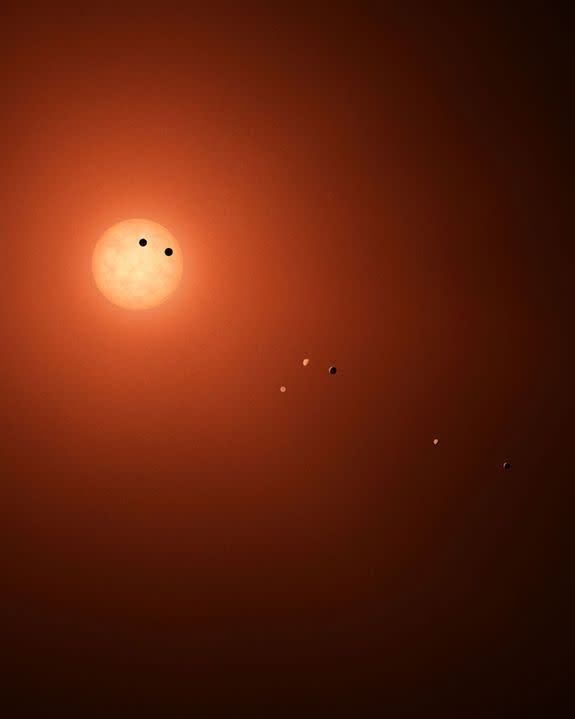NASA gives out data about TRAPPIST-1 and its planets for free online

TRAPPIST-1, a star that plays host to at least seven Earth-sized planets only 40 light-years away, is the cool kid on the space block these days.
Scientists have been gathering all the information they can about the system, which plays host to more possibly habitable, Earth-sized worlds than ever seen before. Now, NASA is making all of that data freely available online for professional and amateur astronomers.
SEE ALSO: Seven Earth-sized planets orbit an alien star only 40 light-years away
New data! @NASAKepler released new info on #TRAPPIST1 🔭🎉 The data on the 7 Earth-size worlds is public: https://t.co/bHGxIKJ7RJ pic.twitter.com/6nMRrl7e5w
— NASA Planetquest (@PlanetQuest) March 8, 2017
The space agency spent 74 days observing TRAPPIST-1, which is far smaller and cooler than the sun, with the Kepler Space Telescope as part of its K2 mission.
"Scientists and enthusiasts around the world are invested in learning everything they can about these Earth-size worlds," Geert Barentsen, a K2 research scientist, said in a statement.
"Providing the K2 raw data as quickly as possible was a priority to give investigators an early look so they could best define their follow-up research plans. We're thrilled that this will also allow the public to witness the process of discovery."
The new, uncalibrated data includes dips in the light of the cool, small TRAPPIST-1 star. Those dips might be the signals of planets passing between their star and Earth, allowing researchers to learn more about those worlds.
For those following at home, here is the full 79 days of the #K2Mission's look at #TRAPPIST1, including the 5 day safe mode in early Feb. pic.twitter.com/QoPc16ePJx
— Ethan Kruse (@ethan_kruse) March 8, 2017
Shortly after the discovery of TRAPPIST-1 and three of its planets was first announced in May 2016, scientists started to figure out a way to turn Kepler toward the system for observation.
NASA expects to release processed K2 data by the end of May.
Scientists think it's possible ultracool dwarf stars like TRAPPIST-1 shoot off more flares than sunlike stars early in their lives, but those cooler objects calm down as they age. Those flares could dampen chances for life on worlds orbiting ultracool dwarfs.

Image: NASA/JPL-Caltech
Still, if atmospheres on the Earth-sized worlds were able to develop, it's possible that some of the planets could support life.
Researchers think that TRAPPIST-1 has been around for at least 500 million years, long enough for organisms to develop.
Scientists will continue pointing space-based and ground-based telescopes at these worlds and any others that might be lurking in the system to try to figure out if life is actually possible on these planets.
